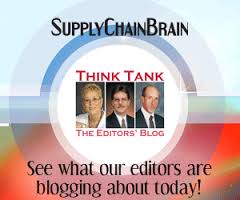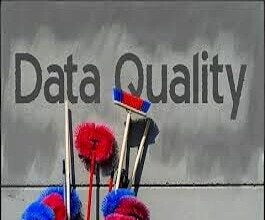The one-number forecasting concept has been debated for years.
Advocates argue that having different groups within the same organization working to different forecasts is insane. You can’t have the supply chain building to X, the sales force selling to Y, and the financial folks counting on revenue of Z. This is an invitation for disaster.
But is the imposition of a single forecast number across the whole organization any less insane?
The one-number forecasting concept has been debated for years.
Advocates argue that having different groups within the same organization working to different forecasts is insane. You can’t have the supply chain building to X, the sales force selling to Y, and the financial folks counting on revenue of Z. This is an invitation for disaster.
But is the imposition of a single forecast number across the whole organization any less insane?
 In a SupplyChainBrain blog post titled “There Is No Magic Number for Demand Forecasting,” Robert Bowman chronicles discussion of this topic at the recent Institute of Business Forecasting conference. Citing presentations from Nestle, Combe Inc., Syncro Distribution, and Merck, Bowman concludes we should “forget about” fixed one-number forecasting, but we still need to achieve internal and external alignment through the planning process. This is the right conclusion.
In a SupplyChainBrain blog post titled “There Is No Magic Number for Demand Forecasting,” Robert Bowman chronicles discussion of this topic at the recent Institute of Business Forecasting conference. Citing presentations from Nestle, Combe Inc., Syncro Distribution, and Merck, Bowman concludes we should “forget about” fixed one-number forecasting, but we still need to achieve internal and external alignment through the planning process. This is the right conclusion.
The forecast should be an unbiased best guess of what is really going to happen in the future, but we need to recognize (and take into account) the uncertainty in that one number. As Patrick Bower, senior director of corporate planning and customer service at Combe Inc. (and winner of IBF’s 2012 award for Excellence in Business Forecasting and Planning) pointed out, what’s needed is “banding” around the one number, to indicate the likely range of possible outcomes. (This same point was made by Charles ReCorr in his article “What Demand Planners Can Learn From the Stock Market” as discussed in the previous The BFD blog.)
So the one-number forecasting concept can be rejected because we really should be using at least three numbers: the point forecast, and the upper and lower bounds. This is simple recognition of the reality that our forecasts aren’t going to be perfect, and we need to be prepared. As Jonathon Karelse, president of Syncro Distribution, hammered home the point, “You need to plan appropriately for the high side and the low side.”
Rejection of one-number forecasting is not the first step toward anarchy. It is instead the rejection of, as Bowman puts it, “A simple answer to a complex problem.”







